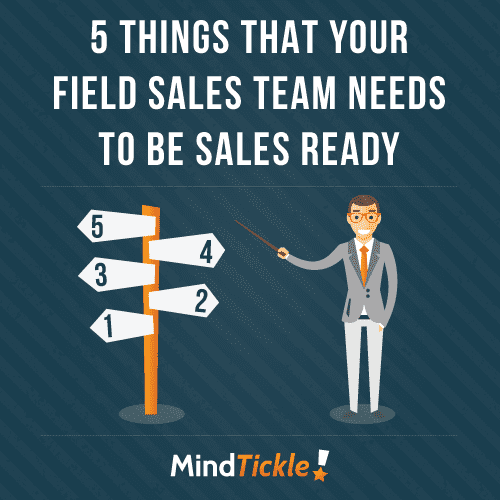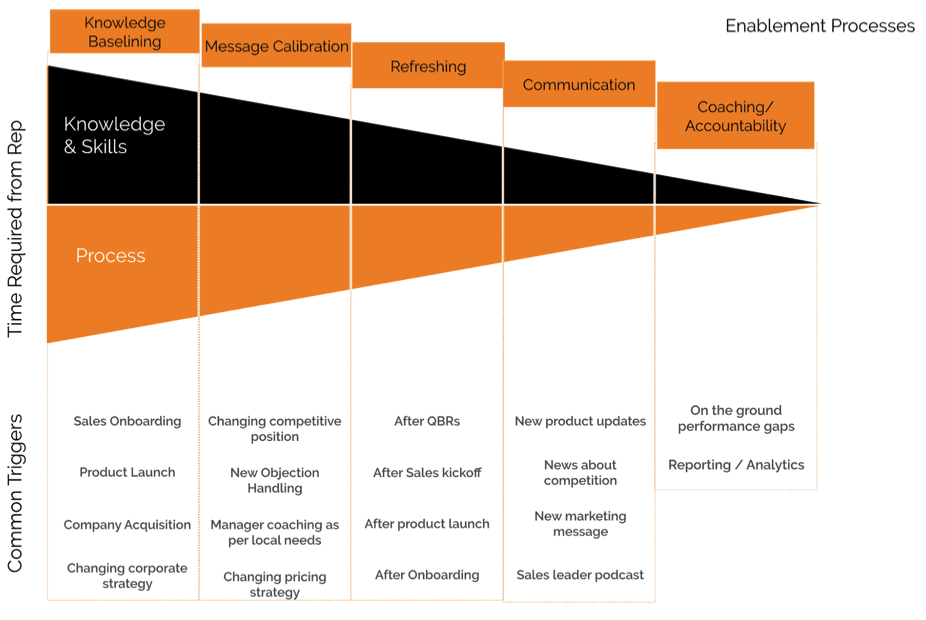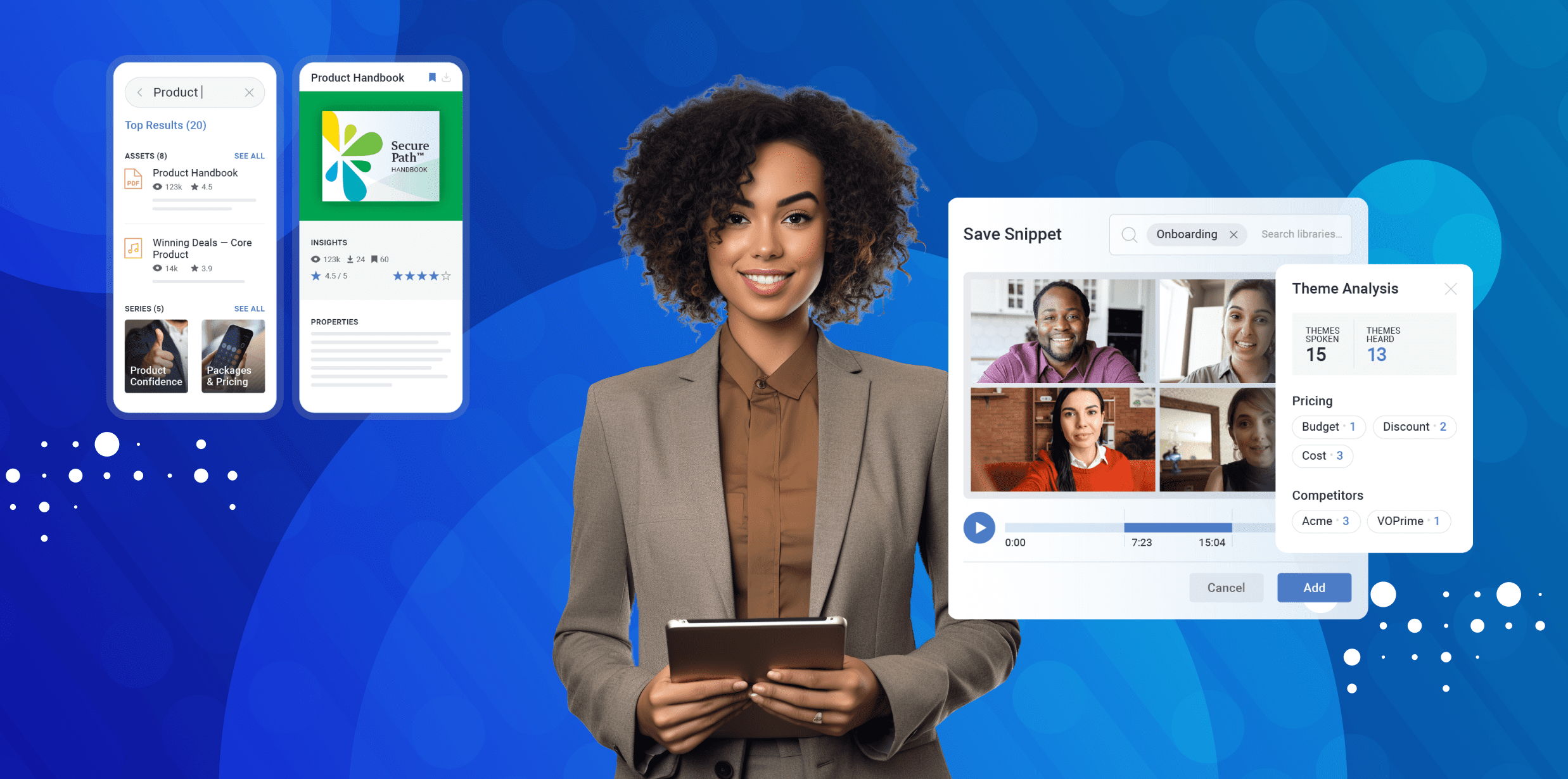 I often hear from our customers how challenging it is to manage distributed field sales teams. After all, it’s difficult to get everyone in the same room more than a couple of times in a year. This makes achieving alignment on key topics on an ongoing basis challenging. Another issue often cited is coaching and sharing feedback, as you cannot see what your reps are doing on a day to day basis.
I often hear from our customers how challenging it is to manage distributed field sales teams. After all, it’s difficult to get everyone in the same room more than a couple of times in a year. This makes achieving alignment on key topics on an ongoing basis challenging. Another issue often cited is coaching and sharing feedback, as you cannot see what your reps are doing on a day to day basis.
These issues are all compounded by the growing need to constantly be on the ball and stay one step ahead of your prospects and competitors.
While every sales rep will learn their baseline knowledge and have their message calibrated when they are onboarded, there is still a need to constantly keep them primed on multiple topics. This could be anything from new product launches to updates on competitive positioning, or any other information that is specifically relevant to your team, region or industry. This is why the ongoing readiness of your reps is very important.
While the challenges most of our customers express are broadly the same, there are some strategic differences in the readiness approach I recommend for them. Primarily, it depends on whether their business model is sales led or distribution led.
Sales led businesses tend to rely more on solution selling, so the needs of their sales team are focused on things like re-baselining knowledge and sharing success stories for example. On the other hand, a distribution-led sales model requires reps to get the right inventory in the right place at the right time. So ongoing communication on these topics tends to play a bigger role in making their sales teams successful.
With this in mind, I’ve found that there is a five-part communication framework that best represents ongoing field sales readiness: Baselining, calibration, refreshing, communication, and coaching and accountability. Each section requires a different type of communication to your reps that in turn contributes to their ongoing field readiness.


Each of these enablement initiatives is aimed at ensuring your sales team masters both message and process excellence. The amount of information that is imparted to your reps in each of these enablement components differs, as does the amount of time that your reps will need to digest the information. In addition, different types of enablement processes often have varying shelf-lives. Some of them may only occur once every six months while some others may be more frequent, even weekly or monthly.
I’ll take you through each of the components of this framework and how they are used by our customers below.
1. Knowledge Baselining
Baselining includes those changes that require the knowledge of your sales reps to be significantly updated. This could be changes in messaging or a process, often driven by strategic events such as acquisitions, new rep onboarding, new product launches or a change in the corporate or product branding. Given the impact of knowledge baselining it is imperative that all your reps are aligned, so it may require significant time and enablement effort.
By far the largest volume of content that will be pushed to your sales reps is for knowledge baselining. The enablement efforts may include several different tools, such as role plays, presentations, and quizzes, to ensure successful baselining (or re-baselining).
2. Message calibration
Calibration involves updates to the knowledge that will change the way your sales message is articulated. This could occur straight after your sales kickoff, for example, to realign the sales message with the new vision presented by leadership. It may also be necessary when a new competitor enters the market, there is a change in pricing or a new customer objection comes to light.
Depending on the nature of the message change involved, there may be quite a bit of content pushed out to recalibrate your message
.
It may also be necessary to utilize several enablement tools, such as role plays and short videos, to help align your reps with the new message.
3. Refreshing knowledge
New knowledge or skills that your reps have recently learned need to be constantly refreshed to counter the forgetting curve. This is helpful after a sales kickoff or new hire onboarding, where your sales reps have been trained on something completely new and need to remember it.
This content is usually delivered in relatively small bites so that they’re easy for your reps to digest. Your enablement efforts may involve tools such as short quizzes that can be completed on the go and provide a quick litmus test of whether the information has been retained.
4. Communication of new knowledge
This enablement process involves communicating updates that your reps can use in their sales conversations. In a distribution led business model this may be about inventory or pricing incentives that change regularly for example. It can also include reverse communication from the field through polls and surveys. If your business is a fast-growing technology platform then new product and competition updates could be included here.
These communications provide short, bite-sized pieces of new information that your reps need to stay on top of quickly.
5. Coaching and accountability
Coaching and accountability happen at four levels; Your sales reps, sales managers, sales enablement, and leadership. Your sales reps often know what their gaps are and should constantly work with their managers to improve and close these. Sales managers are responsible for driving readiness initiatives that improve the overall readiness of their team. Sales enablement and leadership are accountable for ensuring the whole sales team is sales ready and constantly investing in improving your sales teams’ skill and knowledge.
While the enablement initiatives may vary significantly, they are conducted as part of the day to day operations. This means that they’re usually in the context of your reps or sales team. To make it easier for your reps to digest on the go it’s a good idea to ensure that the format is familiar to them.








